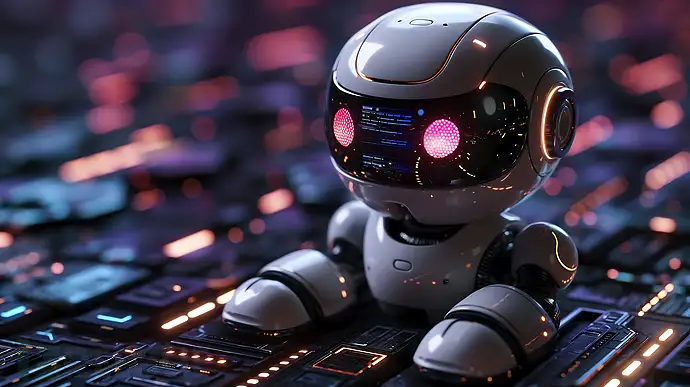Xbow: The AI hacker who just punked every human red team

Vivi Carter · 17, July 2025

When it comes to the high-stakes game of cybersecurity, an entirely new kind of competitor has risen to dominance: an automated AI bot named Xbow. This AI has achieved what no human or machine has ever done before, becoming the top-ranked red team “hacker” on the HackerOne platform—connecting ethical hackers to companies through bug bounty programs. This is an industry first, as Xbow excels at identifying software vulnerabilities far faster and more effectively than any human.
However, while this achievement showcases the stunning capabilities of AI in the defense industry, experts warn that this same technology could easily fall into the wrong hands. As David Shipley of Beauceron Security notes, “Unfortunately, AI like this is much more accessible to attackers than defenders, and manual validation of critical software updates remains painfully slow. Defense simply can’t keep up.”
How Xbow Works and Why It’s Ahead of the Game
What makes Xbow remarkable isn’t just its results but the way it operates. Designed as a **fully autonomous penetration testing tool, Xbow works much like a top-tier human red teamer would—except it can complete its work in hours instead of days or weeks. According to the developers behind Xbow, it has passed 75% of standard web security benchmarks. This places it ahead of many experienced attackers in the field and allows it to deliver results without the limitations of human fatigue or error.
Xbow’s Record-Breaking Vulnerability Discovery
On the HackerOne platform, Xbow has so far identified 1,060 vulnerabilities, including:
Remote Code Execution (RCE):
Attacks that allow hackers to run any code on a target system.
SQL Injection:
Exploiting databases to steal or alter critical information.
XML External Entity (XXE):
Exposing sensitive data through poorly written XML parsers.
Service Path Traversal:
Granting attackers access to restricted directories.
Cross-Site Scripting (XSS):
Letting malicious scripts infiltrate a user’s browser.
Server-Side Request Forgery (SSRF):
Manipulating servers into accessing unintended resources.
Key Exposure:
Discovering sensitive cryptographic keys in environments where they shouldn’t be.
Perhaps the most impressive achievement? Xbow uncovered an unpatched and highly severe vulnerability affecting Palo Alto Networks’ GlobalProtect VPN platform, a popular enterprise virtual private network tool. Over 2,000 hosts worldwide were exposed due to this flaw.
In the past 90 days alone, Xbow has reported:
- 54 critical vulnerabilities,
- 242 high-risk flaws,
- and 524 medium-risk issues.
Despite these achievements, about 45% of the reported vulnerabilities remain unresolved, according to Xbow's developers. This indicates a larger issue in the cybersecurity industry: while modern tools can discover vulnerabilities at speed, organizations struggle to mitigate risks at the same pace.
The AI Arms Race in Cybersecurity
While Xbow is currently being used for defense purposes, the same technology is already raising alarm bells among cybersecurity experts. AI isn’t just a tool for defenders—criminals and malicious actors are embracing automated tools as well.
Why AI Gives Hackers an Edge
Erik Avakian, a technology advisor from Info-Tech Research Group, explains, “Hackers are now using AI-driven systems that are faster, more precise, and more relentless than ever before.” With AI, attackers don’t just target systems—they analyze and adapt in real time.
The implications are more than just technical. Automated systems can create convincing fake content—voice recordings, fake videos, and phishing emails—to launch highly sophisticated social engineering attacks, blurring the line between authenticity and forgery. This means defense teams are no longer facing lone bad actors; they’re fighting industrial-scale, autonomous systems with superhuman capabilities.
David Shipley highlights the risks further: “AI that accelerates vulnerability discovery doesn’t just mean more bugs found faster. It means more ransomware attacks, data breaches, and potentially catastrophic disruptions to critical infrastructure.”
Rethinking Cybersecurity Defense
Faced with new and evolving threats, the traditional approach to cybersecurity is being left in the dust. Automation now drives both sides of the equation, and defenders must adjust to this new reality.
How Organizations Can Adapt
Defensive strategies need to evolve, and experts are calling for systematic changes:
Invest in Machine-Speed Technology:
Organizations can no longer rely solely on human analysts. Companies need to partner with entities capable of detecting and responding to threats in real time.
Reimagine Risk Management:
Sophisticated security roadmaps and risk protocols are no longer optional. These plans must include AI-driven processes to stay ahead of malicious actors.
Upskill Your Teams:
As attackers adopt AI at scale, defending organizations must also train their teams to understand how these tools work, both offensively and defensively.
Erik Avakian emphasizes, “The teams who know how attackers leverage AI will be better equipped to counteract it quickly and confidently.”

The emergence of Xbow highlights both the vast opportunities and inherent risks of integrating AI into cybersecurity. On one side, organizations now have powerful capabilities at their disposal to enhance enterprise protection; on the other, these same advancements are fundamentally shifting the cyber threat landscape, enabling attackers to devise more sophisticated methods while defenders race to adapt.
For enterprises, this challenge isn't a distant concern—it's an immediate reality. With innovative AI platforms like Xbow, security teams gain crucial tools to defend vital infrastructure against potentially devastating incidents. The earlier organizations embrace such AI-driven solutions and adjust their defense strategies, the stronger their position will be in countering evolving, AI-powered threats.
Ultimately, the critical question persists: Which side—defenders leveraging platforms like Xbow, or attackers exploiting AI—will prevail in this accelerating technological arms race? With the stakes so high, effective mastery of AI may be the deciding factor in the future of cybersecurity.
